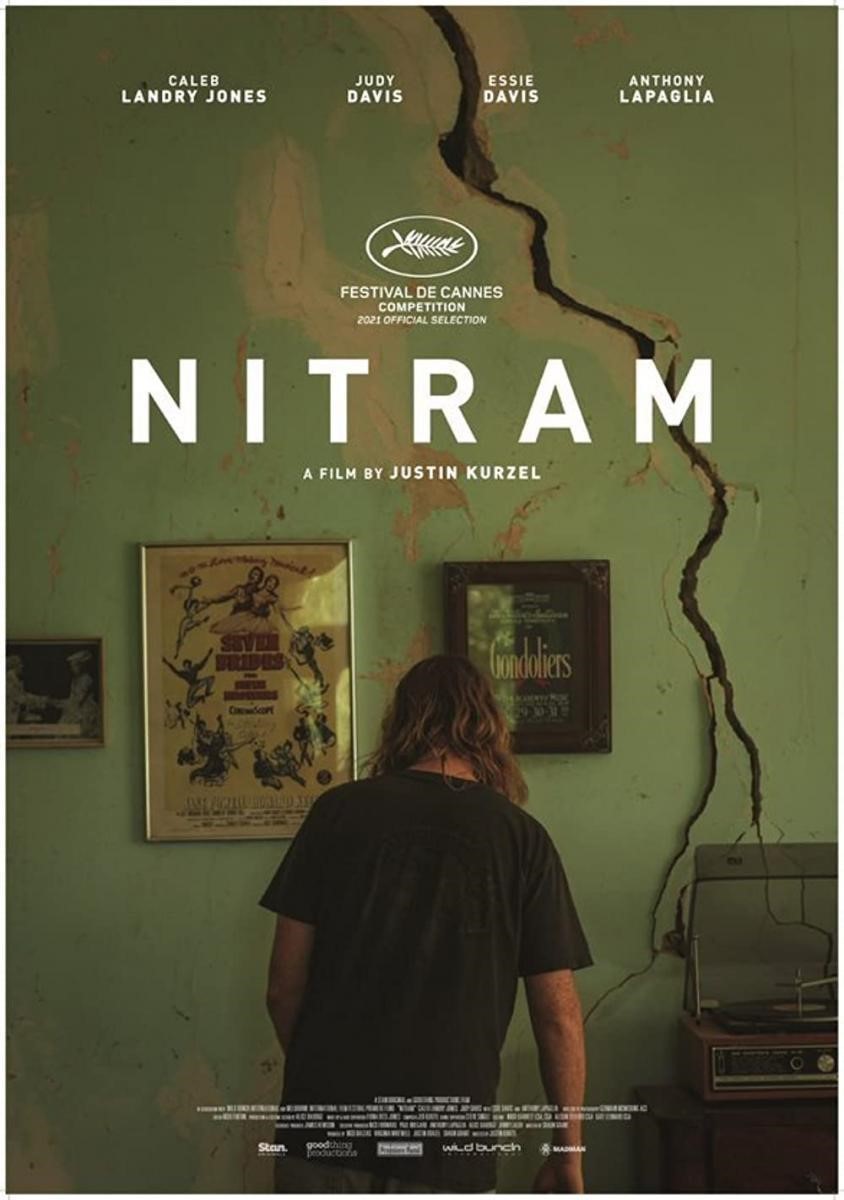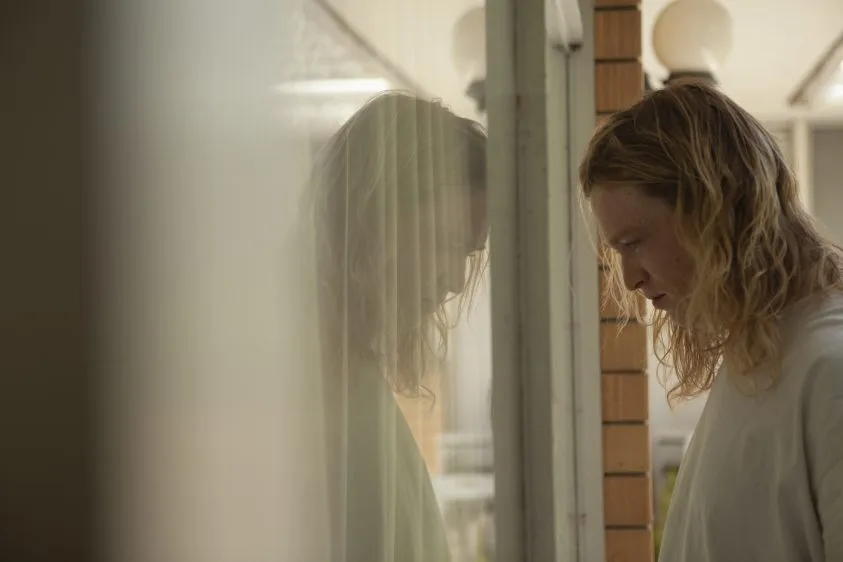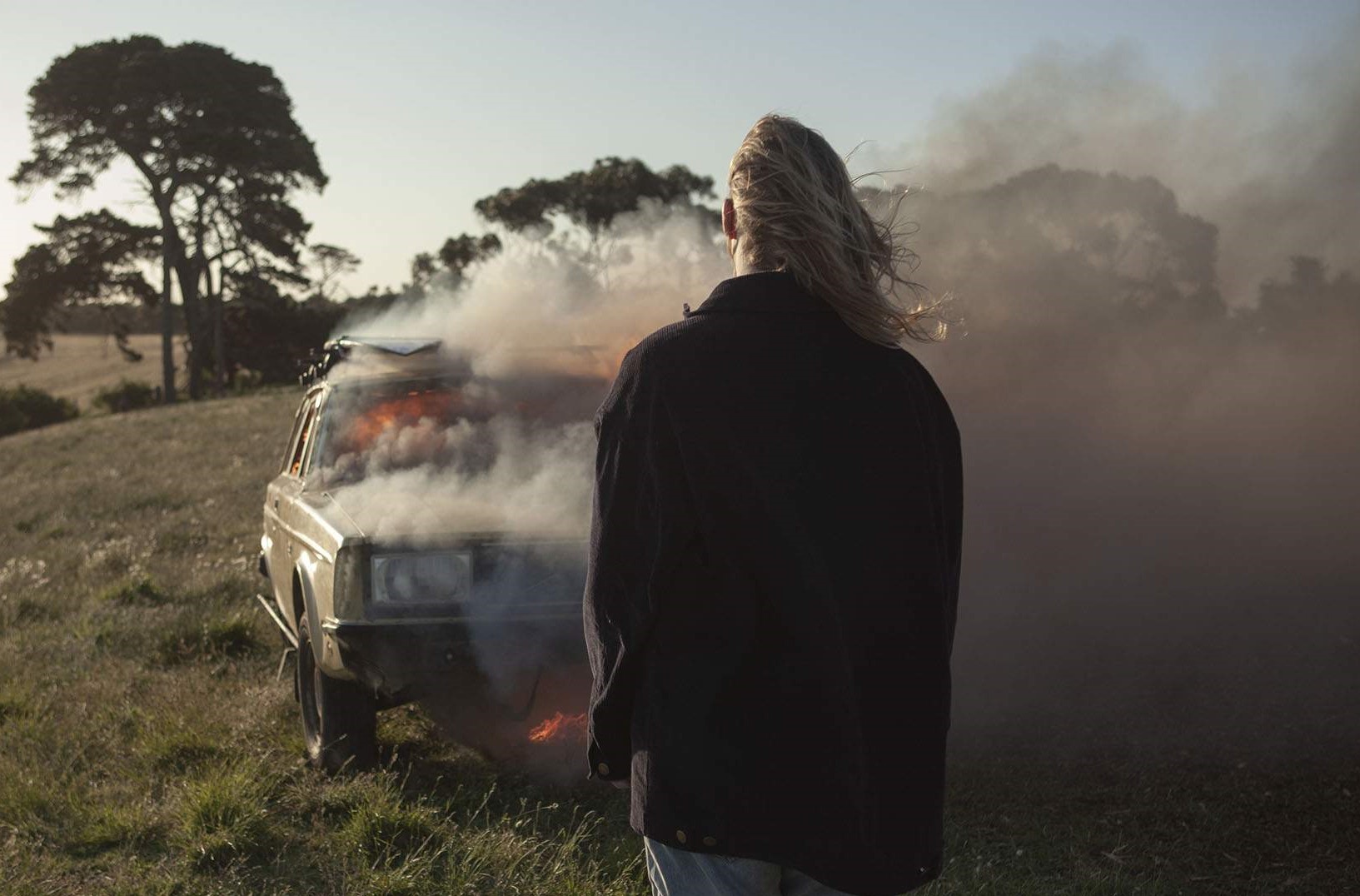
Director: Justin Kurzel
Writer: Shaun Grant
Cast: Caleb Landry Jones, Judy Davis, Anthony LaPaglia, Essie Davis
Producers: Nick Batzias, Shaun Grant, Justin Kurzel, Virginia Whitwell
Music: Jed Kurzel
Cinematographer: Germain McMicking
Editor: Nick Fenton
Cert: 15
Running time: 112mins
Year: 2021

What’s the story: Recounts the events in Port Arthur, Tasmania in 1996, leading up to the 28-year-old Martin Bryant (Jones), nicknamed “Nitram”, murdering 35 people and injuring 23 more in Australia’s worst mass-shooting.

What’s the verdict: With mass-shootings now commonplace, films dramatising perpetrators arrive with question marks hanging over them. What is to be gained from making the film? How will it affect survivors and loved ones of those killed? What dangers lie in applying artistic license to real-life tragedy? Does the film risk fuelling the celebrity delusion of burgeoning mass shooters?
Nitram avoids insensitivity or glamourisation by approaching its story with a clear political and moral judgement. Justin Kurzel’s film is unequivocally pro-gun control. Damning closing text notes that laws enacted after this tragedy have not curbed gun ownership in Australia. There is also a critique of how Australian society (but mirrored in most other countries) does not adequately invest in care for disturbed individuals or their overwhelmed families, no matter the frequency of red flag behaviour.
In this, Nitram is like Kurzel’s 2011 debut, Snowtown. That film explored how neglected, underfunded working class neighbourhoods were easy hangouts for serial killers looking to hide in plain sight.
For their latest film, Kurzel and Snowtown writer Shaun Grant stick close to reported fact, avoiding easy answer story beats. Although disturbed and with learning disabilities (in real life one doctor put his mental age at 11), Martin Bryant’s mental illness is not demonised as the cause for his actions. Rather the film presents the bizarre events of Bryant’s life coupled with a lackadaisical Australian attitude to regulations. Both aspects formed a tragic confluence of circumstances that led to the horrific killings.
His parents are caring, but exhausted by his wild behaviour. Dad (a performance of genuine heartache by LaPaglia) permits his son’s wild antics (e.g., setting off fireworks outside a school) as a way of him getting it out of his system. Mum (Judy Davis, brittle, wearied, excellent) is loving but hardened, her attempts to impose boundaries typically ending in conflict. Doctors are distracted and unaware of the danger posed by the unpredictable twentysomething.
Jones (who won Best Actor at Cannes 2021 for his work here) captures the drip-drip frustration in someone unable to process the world or his impulses. The actor conveys the uncomfortable aura Bryant reportedly projected, which resulted in bullying or swift rejection from most who encountered him. The title is Bryant’s first name being reversed; a nickname given him by school bullies because he was “backwards,” then adopted by the wider community.

But his lack of filtering leads to him befriending eccentric lotto heiress Helen (an extraordinary Essie Davis). He benefits from her fortune while giving the lonely woman the attention she is missing. When their relationship is brought to a sudden halt, Bryant is distraught, but the film once more avoids easy cause-effect psychology.
What is directly linked to the killings is media coverage of the Dunblane massacre, which occurred six weeks before the tragedy in Port Arthur. A contemporary news report focusses on the shooter in that case, using language also levelled at Bryant. The real-life Bryant would become obsessed with media reports on the shooting and its aftermath, and did not need to search far to feed his fascination. Unlike media coverage that repeats killers’ names like an incantation, the filmmakers here elect never to mention Bryant’s name.
Also wisely omitted is the massacre, which lasted hours and ended with a siege, followed by Bryant’s capture the following day. Little would be gained from the film graphically depicting the random horror of that day, and a risk of accidental glamourisation would be high.
The 2006 New Zealand film Out of the Blue did focus on a 1990 mass-shooting in the seaside town of Aramoana. It avoided sensationalism by sticking with the townsfolk while a manhunt for the killer was launched.
Nitram’s truly disturbing scene depicts Bryant walking into a licensed gun shop and effortlessly purchasing an AR-15 and shotguns. A queasy fear comes from the shop owners’ breezy banter, casual reassurances of “no drama” and “no tears” peppering the conversation. Audience unease rises again when Bryant buys a rifle second hand, kids playing nearby in the seller’s living room.
Kurzel lenses his film in a narrow, near 4:3 aspect ratio. Characters are confined despite the open space of beach town Port Arthur. The detached, near-documentary visual style avoids easy editorialising, but could be criticised for allowing audiences to believe everything here is real. Helen’s mother and Bryant’s girlfriend are real-life characters not featured in the film, for example.
Inevitably, Nitram has been controversial. Some will decry the decision to make a film about the events. But this sobering film is a necessary reminder that free access to firearms inevitably leads to easily avoidable tragedy.
Rob Daniel
Twitter: rob_a_Daniel
Podcast: The Movie Robcast

Film of the year, right there (imho).